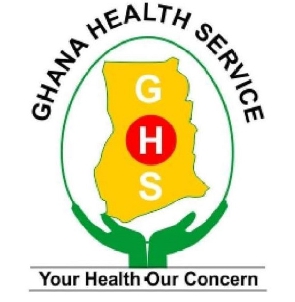It was a long-awaited update but, thankfully, on October 2, 2024, Ghana’s Ministry of Health (MOH) issued a news release on the tragic case of the Winneba Trauma Hospital patient dumped on the outskirts of Gomoa Ojobi where she died a week later.
Intriguingly, the release said the ministry was referring the “conduct of certain officials” of the hospital to the police Criminal Investigation Department (CID), as well as the Attorney-General’s Department for further investigations.
On reading the report of the committee that investigated the matter, three clues emerged as possible reasons why Minister of Health Dr Bernard Okoe Boye and the Ghana Health Service (GHS) have found it necessary to involve the CID.
Firstly, the victim was admitted to the Winneba Trauma and Specialist Hospital (WTSH), Central Region, on May 29, 2024, but as at the time of the completion of the work of the MOH’s investigative committee on July 25, 2024, she had still not been identified! Thus, name and age unknown.
This led me to ponder whether the patient would remain forever a ‘Jane Doe’ – or rather, an ‘Akua Doe’.
In some jurisdictions, ‘Jane Doe’ is the tag given to a woman instead of a known name: “When you need an anonymous name for a real or hypothetical woman, call her Jane Doe …In the case of a man, you'd call him John Doe … sometimes people use the term Jane Doe to mean "an average, ordinary woman," or an unidentified patient or crime victim – emphasis added. (Source: Vocabulary.com Dictionary)
(Among the Akans, including the Fantes of the Central Region, ‘Akua’ is the name given to a girl born on a Wednesday, and May 29, the day of her admission to the hospital was a Wednesday.)
Secondly, it had been concluded that the woman had been the victim of a ‘hit-and-run’ accident, but nobody had reported such an accident!
Thirdly, even more curious in a country like Ghana, nobody had reported a case of a missing relative! Yet, the news of the abandonment had been widely circulated, sparking general anger, distress and calls for severe punishment for those responsible for the inhumane act.
A passer-by at Ojobi, Gomoa East District, who saw her lying in a ditch alerted the Ojobi Health Centre, from where she was transferred to the WTSH. Gomoa Ojobi is reportedly less than an hour’s drive from Winneba.
For the record, the Gomoa East Social Worker and the staff of the Ojobi Health Centre who arranged the transfer of the patient to the Trauma Hospital, were commended by the committee for their professionalism.
As I observed in an article published online on June 20, 2024, this shocking story of the hit-and-run victim allegedly discharged, transported in an ambulance and dumped at a roadside at Ojobi, believed to be her hometown, raised numerous questions. (The article was ‘Ojobi tragedy, a wake-up call for Ghana to finalise and enact the Aged Persons Bill!’)
In the June article, I wrote: “Allegedly, she was discharged and abandoned mainly because no relative showed up. According to media reports, she died at the roadside on June 10. Interestingly, it’s understood that her body was taken back to that same hospital …
“Not surprisingly, the harrowing video of the woman on the ground, both legs in Plaster of Paris (POP) and a wheelchair beside her, is causing widespread outrage.”
Pending the completion of the investigation, the Medical Director of the Hospital, Dr George Prah, was put on a temporary suspension. However, Dr Prah released a statement in which he insisted that the hospital did nothing wrong.
In conclusion, my article expressed the hope that the alleged appalling mistreatment of the elderly woman would prompt a relevant law; and that when her identity has been established, any such law derived should bear her name.
The ‘Committee constituted to investigate the alleged abandonment of the patient in a bush at Gomoa Ojobi by the Trauma and Specialist Hospital, Winneba’, was inaugurated on June 20, 2024, at the GHS headquarters.
It had six members: Dr Daniel Asare, a former CEO, Korle-Bu Teaching Hospital (Chairperson); Osagyefo Amanfo Edu, V, Omanhene of Mankessim, representing the Central Region House of Chiefs; Dr Reuben Ngissah, Consultant (Orthopaedics) Ridge Hospital; Mr Daniel Fiawotror, Deputy Director, Department of Social Welfare; Mrs Gifty Abankwah Aryee, Head of Nursing, Ridge Hospital; and Mr Peter Obiri-Yeboah Esq, Director of Human Resources, GHS.
Main committee findings:
a. The patient neither hailed from Ojobi nor lived there. The first time she was seen there was when she was picked up from the gutter where she was found, and transported to Winneba. Therefore, she must have been knocked down elsewhere and dumped there.
b. Efforts to get her information to establish her identity were unsuccessful, as she was found to be mentally challenged.
c. She also had serious injuries on both legs, multiple fractures.
d. Her mental condition made her extremely aggressive, leading to the decision by the staff to discharge her.
e. Despite the news of her plight being widely reported in the media, no relative came forward.
f. She was taken out of the hospital on June 3, 2024, “without a clear knowledge of destination, no accompanying medications and without any plan for family reintegration as well as review.
g. Considering that she could not move around on her own, her discharge was premature.
h. “The patient was quietly abandoned in a wheelchair at a place outside of town and off the main road, about 200 metres from the Ojobi Health Centre, in an open space and was therefore exposed to the conditions of the weather.”
i. “The patient was discharged not because she was fit to go home, but because she had become a nuisance to the facility, especially to the nurses who attended to her.”
Some committee recommendations:
1. The GHS employees identified as having arranged the evacuation of the patient from the hospital to Ojobi “where she was abandoned and left at the mercies of weather until her demise”, did not act appropriately. The GHS should therefore sanction them.
2. There should be an arrangement with the National Health Insurance Authority for health facilities to submit claims for such patients for reimbursement. But in the interim, the GHS should issue a directive for the setting up of a dedicated fund for paupers at its various facilities.
3. An autopsy should be conducted as soon as possible to establish the actual cause of her death.
4. “The Ghana Police Service should assist in finding the alleged hit-and-run driver as well as the identity of the said woman”, the committee stated.
In my opinion, the report, available on the GHS website is, commendably, very comprehensive and candid, reflecting the high calibre of the committee members. They have done well in this most distressing matter, which is a huge stain on the nation, a country in which old age is supposed to be revered, and the vulnerable cared for.
Therefore, one hopes that the committee’s conclusion, that the GHS and the Ministry of Health should “ensure the full implementation of the recommendations” will be complied with speedily.
If some GHS staff at the Winneba Trauma Hospital failed the patient – and Ghana, too – in her time of critical need, this is a supreme opportunity for the nation to make some amends by instituting measures to ensure that never again should anybody else suffer that fate.
Again, I suggest that the patient’s plight should serve as a wake-up call to pass the long-delayed Aged Persons Bill, which should factor in the Ojobi example to enact a law to protect such vulnerable, pitiful souls.
And I pray that the CID establishes the patient’s identity soon so that such a law can bear her name. Even if the callous, cowardly hit-and-run driver is never found, at least the tragic Ojobi patient should not forever remain an ‘Akua Doe’.
Click to view details



Opinions of Friday, 18 October 2024
Columnist: Ajoa Yeboah-Afari



















